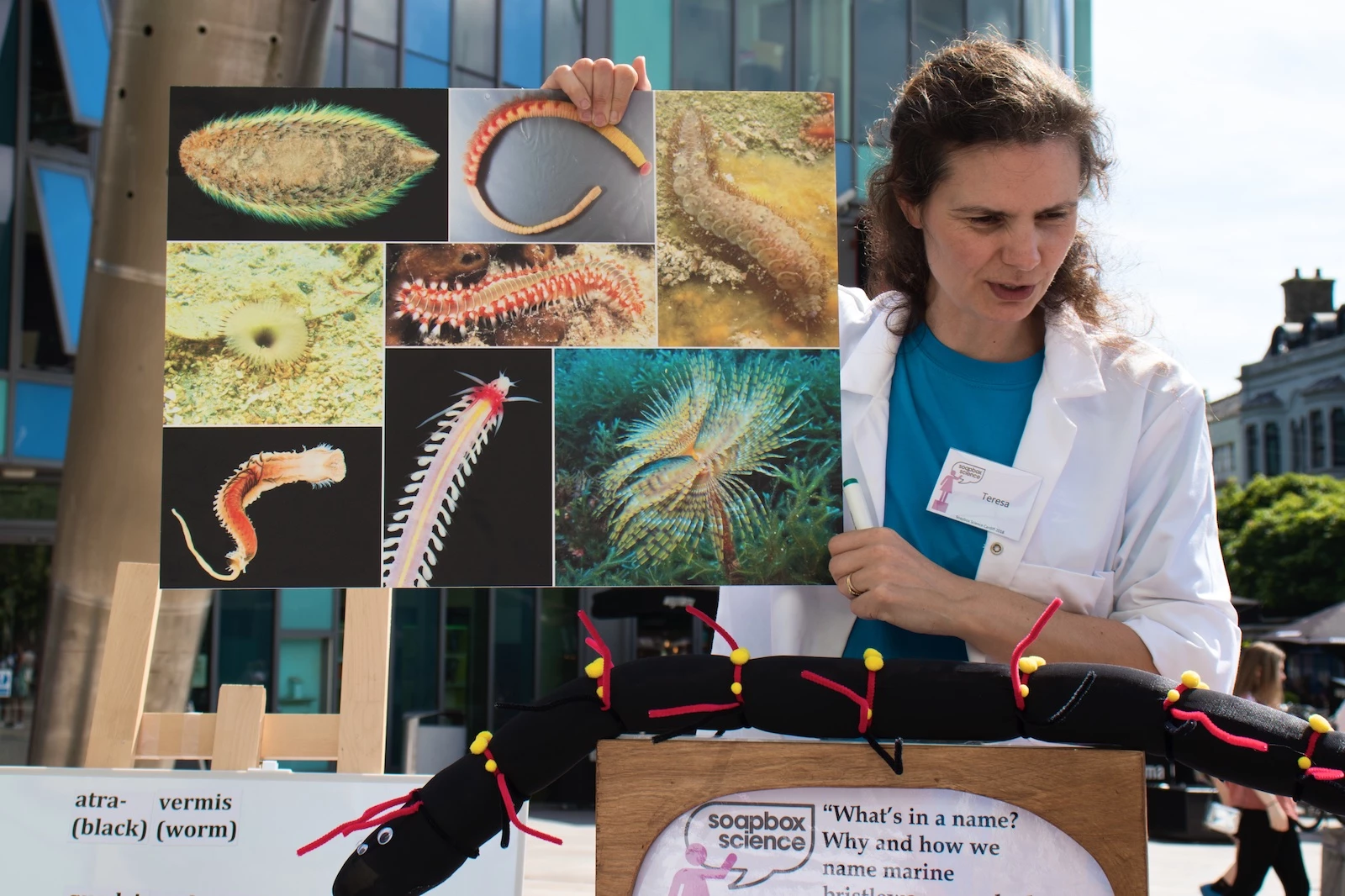The Importance of Taxonomy - Pt 2
, 5 June 2018
Last Saturday (2nd June) I took part in Soapbox Science, an event promoting the role of women in science by getting them to stand on a soapbox in the middle of a city centre and explain to and, hopefully, enthuse, people about what they do. The Cardiff event (one of several held on the same day around the UK) was based outside Cardiff Central Library, by the St David’s Centre.
I thought that it would be the scariest event I had ever done, but in the end, it turned out to be more exciting that I expected and I was barely nervous at all. In fact, standing in a lecture hall in front of several hundred people staring at you while you present is definitely worse!
My talk was based around taxonomy, the science of describing, naming and classifying species, but particularly the aspect of it relating to how we create and give names to species, something we often get asked questions about during events. To this end I had created ‘Brian’, a new species of polychaete (marine bristleworms) the like of which I was pretty confident had not been seen before (at this time!). Brian, of course, was his common name, a name that might change according to who and where you were in the world. He needed a scientific name, a name that would remain consistent regardless of language or location and that allows scientists to be sure that they are talking about the same species.
Scientific names have 2 parts, a group (genus) name that often includes several species that appear similar in general shape and form, and a specific name, the unique name that only belongs to a single species and that separates it from all others. Names are chosen or made from one, or several, Latin or Greek words and when translated, often provide some information on important characters, general appearance or where the organism may first have been discovered. Specific names would not normally be determined without referring to the other members of the group, but for this activity, this once, we were looking at the animal in isolation.
Brian’s group name was Atravermis: from the Latin ‘ater’ meaning black and ‘vermis’ meaning worm. With help from my audience, we then highlighted features on Brian that stood out and we used these to create possible specific names for him. Some of those we came up with were:
rubropodus: from ‘ruber’ meaning red and ‘–podus’ meaning footed = red-footed referring to his red legs;
flavipapillatus: from ‘flavi-‘ meaning yellow and ‘papillatus’ meaning to have papillae (small round balls attached to the skin) = yellow papillated, referring to the yellow papillae found on the body.
There are many rules relating to how and what names you can use for organisms. Taxonomists do not name species after themselves but they can name one after someone else. Thus, another possible name proposed was:
johnstonei: after one of my fellow speakers, Ashleigh Johnstone, as well as several more relating to my audience.
Lastly, names can refer to where the animal was found so one of the last suggestions was:
morhafrenensis: from the Welsh name for the Severn Estuary, Môr Hafren.
If the final choice, this would have given Brian the name, Atravermis morhafrenensis, meaning ‘black worm of the Severn Estuary’!
So why is taxonomy important?
All species have a unique function and role in the environment and if one is affected then it is more than likely that others will be affected too, as the loss of one will always leave some form of ‘hole’. Discovering and naming species helps us recognise each as distinct from all others and then we can recognize if one (or more) is being affected by something and what that is so that we can act on it. Knowledge of species enables us to make decisions based on a more complete view of the world and scientific names mean that we can be sure we are all talking about the same species.
Hopefully my stint on the soapbox might have relayed some of this to my audience and left them with knowing a little bit more about scientific names and where they come from but also why they (and taxonomy as a whole) are important.



